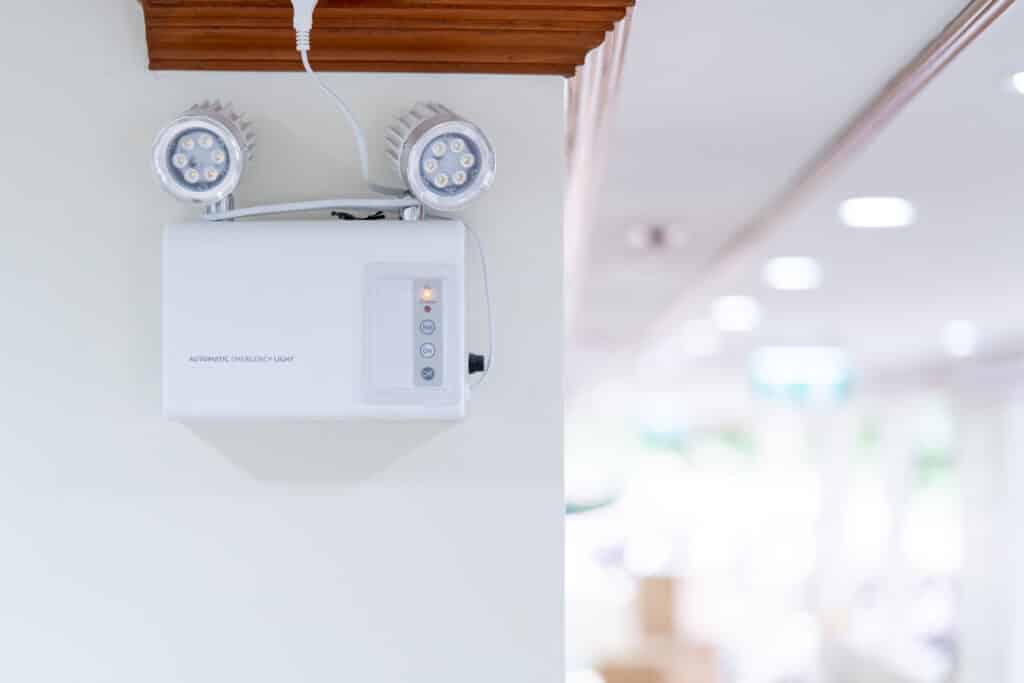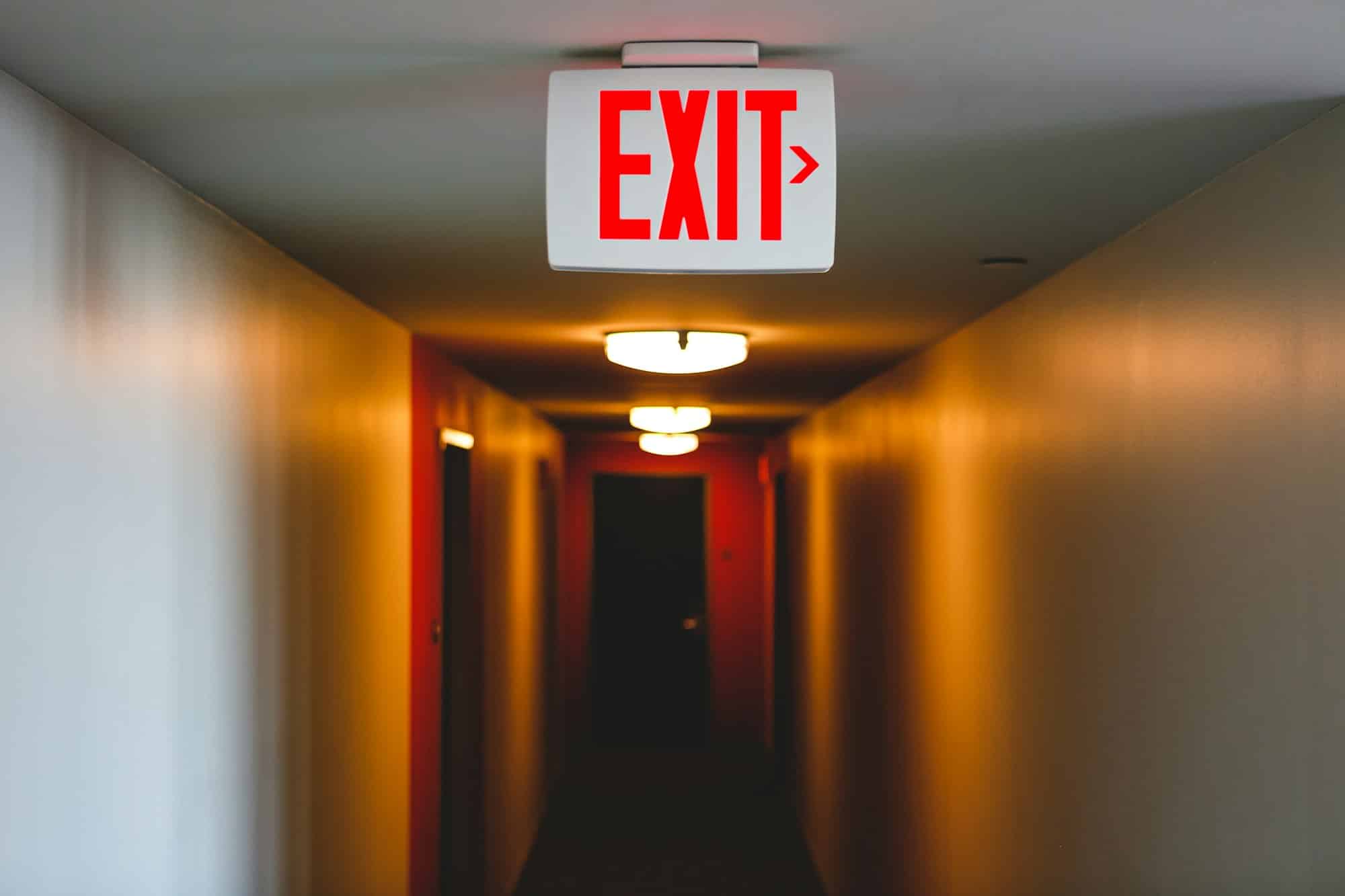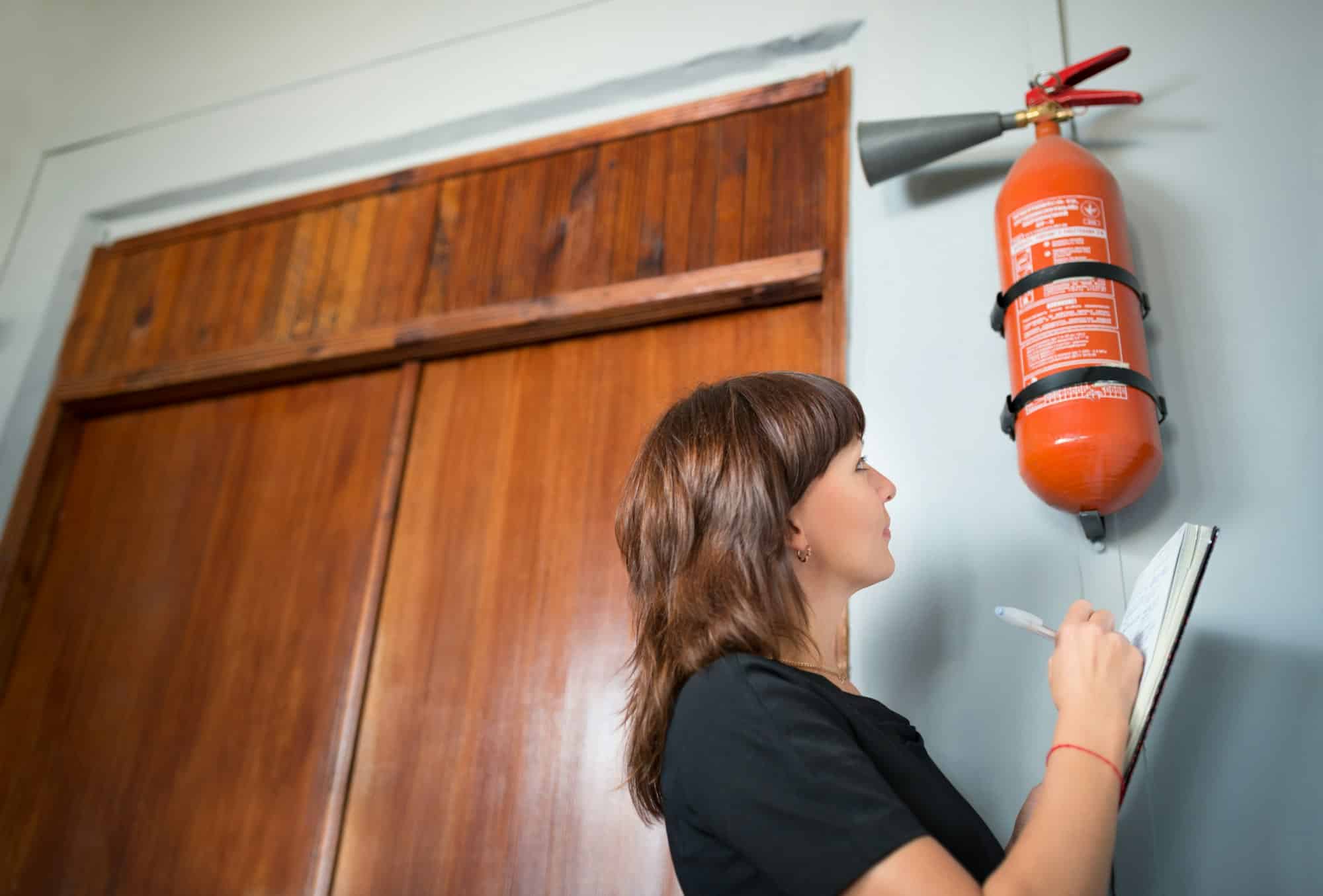Emergency Lighting Services
Rely on Premier Safety for Critical Emergency Lighting Services
Emergency lighting and exit signs are critical requirements in industrial, commercial, residential, educational, religious and institutional buildings. To ensure the safety of occupants, buildings must be outfitted with illuminated and clearly identifiable evacuation routes to the nearest emergency exit.


Emergency Lighting Categories
The two emergency lighting categories are emergency lights and exit signs. While each helps guide building occupants to safety during an emergency, they serve two different purposes.
- Emergency Lights
- Exit Signs
Emergency Lights
Emergency lights deliver the necessary illumination to help guide people toward exits. Powered by a long-lasting battery, the dual lamps are illuminated by ultra-bright LEDs. The National Fire Protection Association’s 101 Life Safety Code, Section 7.9 and the International Building Code, Section 1008.3 outline the standard requirement for emergency lights to remain functional for 90 minutes.
Talk to an Expert

- Standard Types of Emergency Lights
Emergency egress lights illuminate the route to an exit, such as hallways, stairwells, escalators and corridors. Emergency lights must also serve common areas, such as lobbies, bathrooms and conference rooms. Battery-powered emergency egress lights operate during power failures and other emergencies, and they must meet time and other specifications referenced in the NFPA and IBC's code books.
Remote head lights add extra illumination to areas that egress lighting may not reach, such as around corners and at exits. Designed with a self-contained circuitry, battery and charger, a remote head emergency light is an affordable addition to your building's emergency lighting system.
- Functions of Emergency Lights
This setup provides temporary illumination for occupants to safely manage tasks until power is restored.
Applications are targeted for specific locations where safety is critical, such as around certain types of machinery, dangerous chemicals and medical procedure rooms.
Emergency lighting is required to clearly illuminate the safest and most efficient escape route to an exit.

Exit Signs
Exit signs indicate the areas where people can safely exit a building in the event of an emergency. The versatility of exit sign designs encompasses the range of locations in which they may need to be mounted and protected, such as on structures with prior incidences of vandalism and wet areas like public pools.
- Some common types of exit signs include the following
The exit sign is hardwired with a battery backup system that operates in the event of a power outage.
AC only exit signs don't contain an internal battery. Instead, they rely on a generator or another type of emergency backup system.
Not reliant on electrical power, photoluminescent emergency exit signs absorb and store ambient lighting. They're energy efficient and highly visible.
Connected to a power source, electrically powered exit signs utilize LED lights to provide reliable lighting.
U.S. Emergency Lighting Codes and Compliance
Various regulatory agencies establish codes that govern emergency lighting and exit sign requirements.
NFPA
The NFPA has developed two code documents that have become the accepted standard for safe electrical design, installation and inspection. These documents pertain to all aspects of building construction, including emergency lighting systems that protect people and property.

- Standard Types of Emergency Lights
Addressing life safety in new and existing structures, the NFPA 101 provides strategies to reduce fire and other hazards based on the type of building construction and occupancy.
The National Electrical Code is enforced in all 50 states.

OSHA
The Occupational Safety and Health Administration requires all workplaces to have an emergency lighting system in place to accommodate safe evacuation. It defers to NFPA 101 and NFPA 70 for compliance, as noted in OSHA 1910.35.
That said, OSHA does govern exit sign compliance, detailed in the following codes:
- Other Agencies
The Joint Commission is the regulatory agency for the health care industry.
The IBC provides the minimum requirements to protect the health and safety of the occupants of new and existing structures, including means of egress and adequate lighting.
The International Fire Code establishes the minimum fire safety requirements for new and existing structures.
Local and State Regulations
Local authorities enforce building codes and compliance, including those pertaining to emergency lighting systems. The Mid-South states of Mississippi and Tennessee are examples of local jurisdictions responsible for enforcing building code standards.
The Mississippi State Department of Health regulates emergency lighting codes as stipulated in the following statutes:
- The 15 Miss. Code R. § 16-1-44.31.14 covers emergency lighting.
- The 15 Miss. Code R. § 16-1-44.31.17 details regulations for exit signs.
Tennessee adopted the NFPA 101 without amendments. The Codes Enforcement section of the Tennessee Department of Commerce & Insurance enforces safety codes and standards.

Premier Safety LLC's Emergency Lighting and Exit Sign Services
Premier Safety’s team is well-versed in all aspects of low-voltage systems, adeptly managing the design, installation, inspection and maintenance of emergency lighting and exit sign networks for a wide range of industries and facilities, including:
- Commercial
- Retail
- Education
- Restaurant
- Healthcare
- Multi-Family Residential
- Industrial
Emergency Lighting and Exit Sign Installation
Premier Safety’s experienced electricians thoroughly assess your structure to ensure the most efficient emergency exit strategy and route are in place to confirm the safety of your employees, residents and clients. Our expertise includes following the specific regulatory standards and best practices, including:
- Luminary Placement
- Electrical Connections
- Wiring
- Backup Power Sources
- Healthcare
- Multi-Family Residential
- Testing Protocols
Talk to an Expert


Emergency Lighting and Exit Sign Inspection
To confirm your facility’s emergency lighting system is properly functioning, NFPA 101, Section 7.9.3 stipulates regular testing requirements and accompanying documentation. The agency accepts three types of emergency lighting systems:
- Traditional
- Self-Testing/Self-Diagnostic
- Computer-Based Self-Testing/Self-Diagnostic
Testing Schedule
The testing schedule and duration guidelines depend on the governing jurisdiction.
The Life Safety Code stipulates a specific monthly and yearly schedule as follows:
- Monthly: Functional test of emergency lights and exit signs for at least 30 seconds
- Annually: Full-duration test, lasting 90 minutes
According to the EC.02.05.07 EP 1 standard for healthcare facilities, testing must be performed on the following schedule:
- Monthly: Battery-powered emergency lighting systems used for exit signs — egress and task lighting for a minimum of 30-second testing and a visual inspection of other exit signs

Documentation
It’s crucial to keep accurate records of the notable activities and dates related to your building’s emergency lighting and exit sign system. To remain in compliance, document the following:
- Installation: Date, specific equipment, location
- Testing: Date, test results
- Maintenance: Date, activities
- Repairs and replacements: Date, equipment issue, repair or replacement outcome
- Testimonials
Our Customers Love Us
Discover what our clients have to say about their experience with Premier Safety LLC.
Explore Our Other Services
Access Control
BDA & ERCES Systems
CCTV
Emergency Lighting
Fire Extinguishers/ Hood Suppression
Fire Alarms
Structured Cabling
Why Choose Us?










